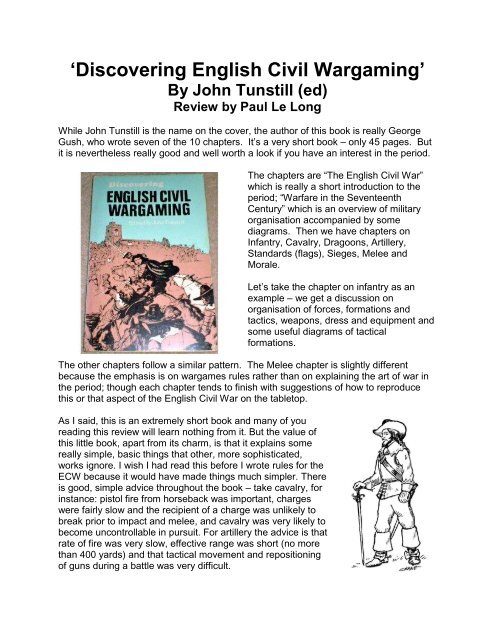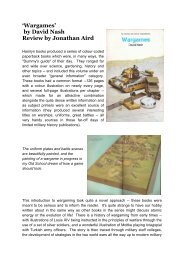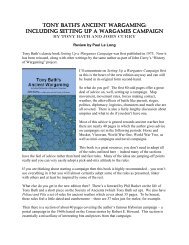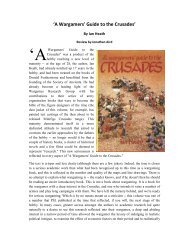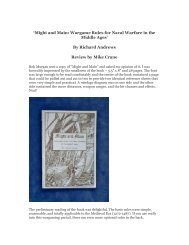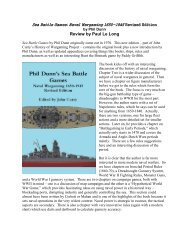'Discovering English Civil Wargaming' book - Lone Warrior Blog
'Discovering English Civil Wargaming' book - Lone Warrior Blog
'Discovering English Civil Wargaming' book - Lone Warrior Blog
- No tags were found...
You also want an ePaper? Increase the reach of your titles
YUMPU automatically turns print PDFs into web optimized ePapers that Google loves.
‘Discovering <strong>English</strong> <strong>Civil</strong> Wargaming’By John Tunstill (ed)Review by Paul Le LongWhile John Tunstill is the name on the cover, the author of this <strong>book</strong> is really GeorgeGush, who wrote seven of the 10 chapters. It’s a very short <strong>book</strong> – only 45 pages. Butit is nevertheless really good and well worth a look if you have an interest in the period.The chapters are “The <strong>English</strong> <strong>Civil</strong> War”which is really a short introduction to theperiod; “Warfare in the SeventeenthCentury” which is an overview of militaryorganisation accompanied by somediagrams. Then we have chapters onInfantry, Cavalry, Dragoons, Artillery,Standards (flags), Sieges, Melee andMorale.Let’s take the chapter on infantry as anexample – we get a discussion onorganisation of forces, formations andtactics, weapons, dress and equipment andsome useful diagrams of tacticalformations.The other chapters follow a similar pattern. The Melee chapter is slightly differentbecause the emphasis is on wargames rules rather than on explaining the art of war inthe period; though each chapter tends to finish with suggestions of how to reproducethis or that aspect of the <strong>English</strong> <strong>Civil</strong> War on the tabletop.As I said, this is an extremely short <strong>book</strong> and many of youreading this review will learn nothing from it. But the value ofthis little <strong>book</strong>, apart from its charm, is that it explains somereally simple, basic things that other, more sophisticated,works ignore. I wish I had read this before I wrote rules for theECW because it would have made things much simpler. Thereis good, simple advice throughout the <strong>book</strong> – take cavalry, forinstance: pistol fire from horseback was important, chargeswere fairly slow and the recipient of a charge was unlikely tobreak prior to impact and melee, and cavalry was very likely tobecome uncontrollable in pursuit. For artillery the advice is thatrate of fire was very slow, effective range was short (no morethan 400 yards) and that tactical movement and repositioningof guns during a battle was very difficult.
This is all great advice that brings the period to life but which many other <strong>book</strong>s ignore,presumably because it is so simple.For most readers though, I imagine the chief value of this <strong>book</strong> is nostalgia.Details: Publisher: Shire Publications Ltd (1973) ASIN: B00113O1DMThis <strong>book</strong> is out of print and currently unavailable on Amazon.


